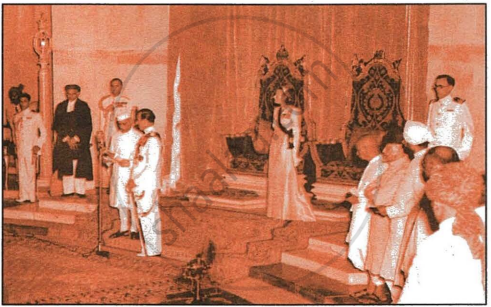Advertisements
Advertisements
प्रश्न
In the historic photograph, Pandit Jawaharlal Nehru, is being sworn in as Prime Minister of free India. In this context answer the following:
- Mention the Provisions of the Indian Independence Act of 1947 regarding the Constituent Assembly.
- Discuss the basic reasons why the Cabinet Mission Plan rejected the demand for Pakistan.
- Mention the areas where plebiscites were to be held. What was the position of His Majesty's government in the new set-up in India?
थोडक्यात उत्तर
उत्तर
- The Indian Independence Act of 1947 gave the Constituent Assemblies of both India and Pakistan the authority to act as their Central Legislatures. These assemblies had complete power to make laws for their respective dominions and would function as sovereign legislative bodies.
- The Cabinet Mission Plan rejected the demand for Pakistan for three main reasons:
- The creation of Pakistan would not solve the issue of communal minorities, as many Muslims would remain in India and non-Muslims would live in Pakistan.
- It was unjustified to include non-Muslim districts of Bengal, Assam, and Punjab within Pakistan.
- The partition would create logistical problems as the armed forces, transportation, and communication systems, such as postal and telegraph services, were built to serve all of India as one unit.
-
- A plebiscite was held in the North West Frontier Province (NWFP) and Sylhet district in East Bengal to decide whether they would join India or Pakistan. Both regions eventually became part of Pakistan.
- Provisions of the Indian Independence Act of 1947 included:
- The British Parliament's authority over India would end on August 15, 1947.
- The title "Emperor of India" was removed from the British royal titles.
- Until new constitutions were written, the dominions and provinces would follow the Government of India Act, 1935.
- The Governor-General was allowed to amend or modify the Act of 1935 until March 31, 1948.
- The British King no longer had the right to veto laws; this power was given to the Governor-General.
shaalaa.com
या प्रश्नात किंवा उत्तरात काही त्रुटी आहे का?
